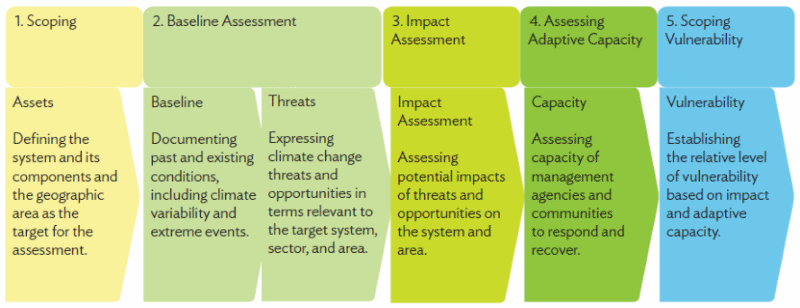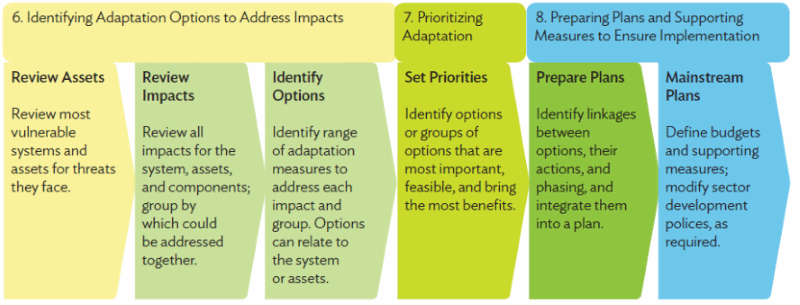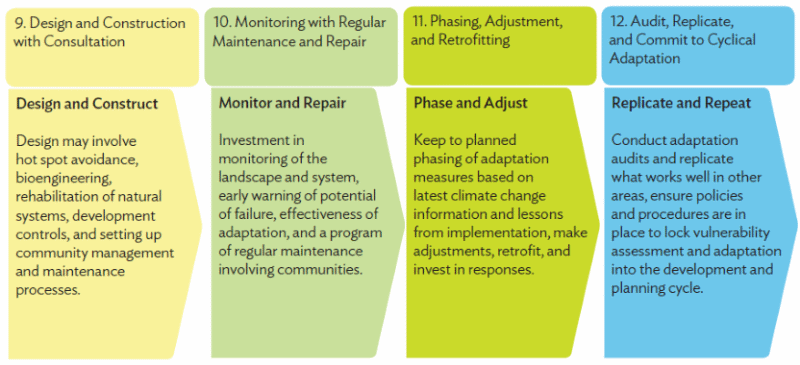Please help us improve PreventionWeb by taking this brief survey. Your input will allow us to better serve the needs of the DRR community.
Nature-based solutions for building resilient cities
By Sonia Chand Sandhu and Jeremy Carew-Reid
Rehabilitating natural systems with green infrastructure is key to building sustainability and resilience to climate change in urban areas.
Overview
The sustainability and resilience of urban areas to climate change can be greatly increased by rehabilitating natural systems and integrating nature-based approaches with conventional infrastructure and urban development. That principle is particularly true in small and medium-sized towns in Asia that are already struggling to adapt to threats from climate change and natural disasters.
The use of green infrastructure and nature-based solutions is an essential alternative or complementary approach to conventional town infrastructure and development planning. This technical study provides practical examples and guidance on green infrastructure and illustrates related participatory urban planning processes through case studies from three Mekong towns in Cambodia, Lao PDR, and Viet Nam.
These examples from the Greater Mekong Subregion demonstrate approaches of immediate relevance for other towns and regions throughout Asia with extensive coastlines, riverine and low-lying wetland areas, short and steep watersheds, and high urbanization pressure. Storms, floods, landslides, and severe droughts underscore the increasing and intensifying extreme climatic conditions that call for strengthened resilience of local communities and critical infrastructure, while ensuring sustainable urban development pathways in balance with nature.
Key findings
Green infrastructure should be a foundation for planning, developing, and maintaining towns and cities with climate change. Local landscapes and natural systems, their networks and functions should be sustained or revitalized to take advantage of their multiple benefits including building urban resilience and sustainability. The design, construction, management, maintenance, and use of green urban infrastructure are best done with local communities. Cross-sectoral collaboration of different government departments together with the private sector and communities can ensure solutions which best meet local needs.
The technical study proposes a process which starts with a scoping exercise, followed by an assessment of the baseline, climate change impacts, adaptive capacity, and related vulnerability in a city. This is followed by the identification and prioritization of adaptation measures to effectively address the projected climate change impacts. The measures are then planned, designed, and implemented in close consultation with the community. The operations stage includes regular maintenance and repair, as well as necessary adjustments of green infrastructure to changing climate conditions. Eventually, the adaptation measures are evaluated to decide on their replication in other areas.
Guiding resilience principles are suggested as an integral part of urban adaptation planning and development in cities. These include the protection, rehabilitation, and mimicry of natural systems, the conservation and wise management of water and energy resources, the sustainable (re-) design of buildings and sites, and transit-oriented development.
The technical study presents possible green infrastructure solutions in four key areas:
- Water and Flood Management, e.g. constructed wetlands, drainage corridors, or rainwater harvesting;
- Slope Stabilization, e.g. live cribwalls, vegetated gabions, or vetiver grass;
- Pollution Management: e.g. bioswales, graywater recycling, or raingardens; and
- Energy, Heat, and Greenhouse Gas Management: e.g. green roofs and walls, recycling, or urban tree canopy.
Conclusion/recommendations
Green infrastructure and nature-based solutions for resilient towns and cities are broadly guided by the following strategies:
- Collaborating across sectors and encouraging initiatives within local communities;
- Availing of technologies to inform and improve adaptation planning;
- Greening and rehabilitating natural elements such as ponds and parks;
- Creating a network of interconnected green spaces and corridors;
- Greening core urban areas, residential neighborhoods, as well as industrial and business zones;
- Monitoring the impact of measures along green indicators;
- Continuing capacity development and retraining of planners, engineers, and developers; and
- Reforming planning systems toward area-wide approaches of development control, integration of nature, and adaptation of key infrastructure assets.
The technical study is a practical guide for applying those strategies showing how nature-based solutions can support green infrastructure development and cross-regional knowledge sharing for more resilient and sustainable cities throughout Asia.
Explore further
Please note: Content is displayed as last posted by a PreventionWeb community member or editor. The views expressed therein are not necessarily those of UNDRR, PreventionWeb, or its sponsors. See our terms of use
Is this page useful?
Yes No Report an issue on this pageThank you. If you have 2 minutes, we would benefit from additional feedback (link opens in a new window).


